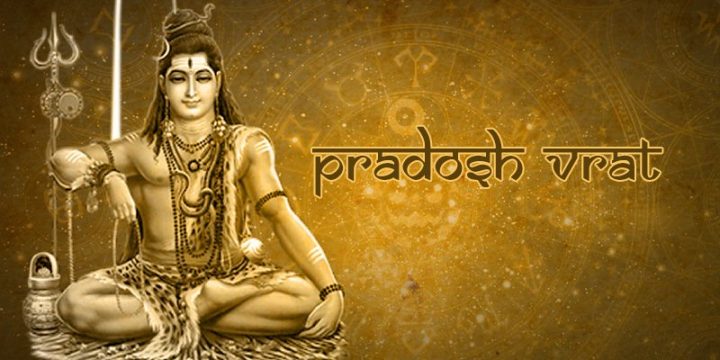Connecting with Lord Shiva’s Bliss: Pradosh Vrat Explained
Pradosh Vrat, the sacred observance on the Trayodashi Tithi or the 13th lunar day, allows devotees to connect with Lord Shiva at his happiest. Usually occurring twice a month, once during the
waxing phase (Shukla Paksha) and once during the waning phase (Krishna Paksha), Trayodashi holds immense spiritual significance for followers of Lord Shiva.
The Purpose behind Pradosh Vrat
The
Pradosh Vrat serves as a means to establish a profound connection with Lord Shiva during his most blissful moments. It is believed that the twilight period, approximately 90 minutes before and after sunset on the Trayodashi Tithi, encapsulates Lord Shiva’s supreme joy. By observing this vrat, devotees seek liberation from past sins, while receiving divine blessings of good health, wealth, and wisdom.
This auspicious time acts as an opportunity to cleanse one’s soul from negative karma, attracting not only the blessings of Lord Shiva but also those of Goddess Parvati and the ruling planet of the specific day of the Tithi. The vrat has the potential to fulfill both worldly and spiritual desires.
The Seven Types of Pradosh Vrat
Depending on the day of the week on which the Trayodashi falls, the
Pradosh Vrat takes on various forms, each offering unique benefits:
Ravi Pradosh Vrat (Sunday):
Observing this vrat on a Sunday invokes respect, admiration, good health, and authority. It is particularly recommended for individuals with a debilitated Sun in their
birth chart.
Som Pradosh Vrat (Monday):
By observing this vrat on a Monday, dedicated to the Moon, devotees can attain peace of mind and body. Additionally, it improves relationships with blood relatives.
Bhaum Pradosh Vrat (Tuesday):
Falling on a Tuesday, this vrat seeks to alleviate the malefic effects of Mars. It enhances marital relations and promotes affability towards others.
Saumyavara Pradosh Vrat (Wednesday):
Wednesdays are associated with Mercury, and observing this vrat empowers devotees with logical thinking, reasoning abilities, and an overall improvement in the quality of life.
Guruvara Pradosh Vrat (Thursday):
Thursdays are dedicated to
Jupiter (Guru). By observing this vrat, devotees can attract wealth, wisdom, success, and spiritual growth into their lives.
Bhruguwara Pradosh Vrat (Friday):
Venus governs Fridays, and this vrat is highly recommended for those seeking marital bliss. It also brings comfort, luck, and luxury to devotees’ lives.
Shani Pradosh Vrat (Saturday):
Occurring on a Saturday, the Shani Pradosh Vrat helps alleviate the malefic effects of
Saturn (Shani), especially those caused by Sade Sati or Ashtam Shani. It brings balance and order to devotees’ lives.
Embracing the Sacred Observance
Pradosh Vrat serves as a powerful conduit for devotees to establish a deep connection with Lord Shiva during his most blissful state. By adhering to this sacred observance, individuals can purify their souls, receive divine blessings, and embark on a path of spiritual growth and prosperity. As believers engage in the Pradosh Vrat rituals, they immerse themselves in the joyous realm of Lord Shiva’s grace, seeking solace, enlightenment, and divine favour.
The 2024 Pradosh Vrat dates are as follows:
- January 09, Tuesday, 11:59:09 PM to 10:24:56 PM
- January 23, Tuesday, 07:52:01 PM to 08:39:40 PM
- February 08, Thursday, 02:02:24 PM to 11:17:27 AM
- February 21, Wednesday, 11:28:00 AM to 01:22:00 PM
- March 08, Friday, 01:20:10 AM to 09:58:13 PM
- March 22, Friday, 04:44:50 AM to 07:18:06 AM
- April 06, Saturday, 10:19:40 AM to 06:54:18 AM
- April 21, Sunday, 10:42:07 PM to 01:11:55 AM
- May 06, Monday, 05:42:18 PM to 02:40:31 PM
- May 21, Tuesday, 03:59:01 PM to 05:39:50 PM
- June 04, Tuesday, 12:18:44 AM to 10:01:17 PM
- June 19, Wednesday, 07:28:11 AM to 07:50:03 AM
- July 03, Wednesday, 07:10:34 AM to 05:54:14 AM
- July 19, Friday, 08:44:30 PM to 07:41:23 PM
- August 02, Friday, 03:29:07 PM to 03:26:49 PM
- August 17, Saturday, 08:05:47 AM to 05:51:22 AM
- August 31, Saturday, 02:25:26 AM to 03:41:01 AM
- September 16, Monday, 06:12:22 PM to 03:10:19 PM
- September 30, Monday, 04:47:55 PM to 07:06:50 PM
- October 15, Tuesday, 03:42:38 AM to 12:19:27 AM
- October 29, Tuesday, 10:31:58 AM to 01:15:49 PM
- November 14, Thursday, 01:01:39 PM to 09:43:36 AM
- November 28, Thursday, 06:23:58 AM to 08:40:10 AM
- December 13, Friday, 10:26:31 PM to 07:40:15 PM
- December 28, Saturday, 02:26:45 AM to 03:32:48 AM
The Commencement and Observance of Pradosh Vrat
Pradosh Vrat, a sacred ritual observed by devotees of Lord Shiva, holds immense importance in bestowing blessings and spiritual prosperity. The observance of this vrat spans from early morning until the worship of Lord Shiva during sunset. However, the specific timing may vary depending on the city and individual traditions. Alternatively, some devotees observe the vrat for a 24-hour period, remaining awake during the night and concluding the vrat with Shiva worship the following morning.
The Rituals of Pradosh Vrat
Pradosh Vrat entails a set of practices that must be adhered to diligently in order to receive the desired spiritual and material benefits. Devotees are advised to awaken early in the morning, preferably during the auspicious Brahma Muhurta at 4 AM. After bathing, they should wear clean attire and abstain from indulging in physical pleasures throughout the vrat.
Dietary considerations hold utmost importance during this sacred observance. While some devotees choose to abstain from consuming any food, others opt for a sattvic diet if health constraints arise. It is essential to avoid tamasic foods, including meat, fish, onions, garlic, mushrooms, and over-ripe or under-ripe fruits and vegetables. These tamasic foods not only affect the body negatively but also hinder spiritual progress. Sattvic foods, on the other hand, promote purity of mind, rejuvenate the body, and bring joy to the heart.
Chanting the mantra “Om Namah Shivaya” helps cultivate the necessary mindset for the vrat. Beginning approximately an hour before sunset, devotees dedicate themselves to the worship of Lord Shiva. This involves reciting his mantras, offering prayers, and performing rituals such as bathing the Shivalinga with water and offering Bilva leaves. Additionally, Goddess Parvati and Nandi are also worshipped alongside Lord Shiva.
During the puja, a Kalasha filled with water, covered with a coconut and adorned with mango leaves, symbolizes Lord Shiva. The water used in the puja is offered as prasad, and sacred ash (vibhuti) is applied to the forehead. Lighting a lamp during the puja not only wards off impurities but also fills the surroundings with positive vibrations, creating an ideal atmosphere for worship. Continuously chanting “Om Namah Shivaya” throughout the puja is highly recommended. Following the puja, engaging in acts of charity is considered auspicious. It is advised to consume a light meal during the night and retire early to bed.
Experience Blissful Rituals: Online Puja Services at ClickAstro
Unveiling the Legends of Shiv Pradosh Vrat
The Pradosh Vrat is associated with various intriguing stories that highlight Lord Shiva’s divine grace and compassion:
The Tale of Lord Shiva and the Halahala Poison
According to legend, during the churning of the cosmic ocean by the gods and demons to obtain the elixir, a deadly poison called halahala emerged. Its potency threatened to annihilate the entire universe. In an act of supreme sacrifice, Lord Shiva consumed the poison, causing immense pain. Goddess Parvati lovingly placed her hand on his throat, halting the poison’s effects and leaving Lord Shiva with a blue throat. The gods and demons, overwhelmed by Lord Shiva’s act, worshipped him. This event took place on the Trayodashi Tithi, further emphasizing the significance of Pradosh Vrat.
The Story of Lord Shiva and the Waxing and Waning Moon
Another narrative linked to Pradosh Vrat revolves around Lord Shiva and the Moon. The Moon, known as Chandra Dev, was deeply infatuated with Rohini, one of his 27 wives and the daughter of Prajapati Daksha. Neglecting his other wives caused them to become jealous, eventually leading them to complain to Prajapati Daksha. Despite his father-in-law’s attempts to rectify the situation, the Moon remained fixated on Rohini. Consequently, Prajapati Daksha cursed the Moon with a debilitating disease that caused him to gradually diminish and ultimately disappear. Seeking solace, the Moon turned to Lord Shiva, who assured him that although he would wax and wane due to the curse, he would regain his full glory before diminishing once more. Thus, the cycle of the waxing and waning phases of the Moon commenced on the Trayodashi Tithi.
The Story of a Devout Brahmin Widow
A poignant tale is told of a poor Brahmin widow with a young son who relied on alms for their sustenance. Devoted to Lord Shiva, the widow regularly observed Pradosh Vrat. One fateful day, while returning home, she discovered a young prince wounded and bloodied, seeking refuge. Moved by compassion, she took him in and raised him as her own son alongside her biological child. As destiny unfolded, the prince married a Gandharva named Anshumati and, with the assistance of his in-laws, regained his kingdom’s throne, rewarding the impoverished Brahmin widow and her son with positions of honor. The widow’s consistent observance of Pradosh Vrat played a pivotal role in the fortuitous turn of events.
Pradosh Vrat serves as a spiritual pathway for devotees to connect with the divine grace of Lord Shiva. By adhering to the prescribed rituals and observing dietary discipline, followers of Lord Shiva can purify their minds, seek blessings, and achieve spiritual growth. The legends associated with Pradosh Vrat further emphasize the significance of this observance, highlighting Lord Shiva’s benevolence and his devotees’ devotion. Thus, the observance of Pradosh Vrat not only promises material and spiritual well-being but also strengthens the bond between humans and the divine realm.











When she get married? Date of birth 14/10/1982,time 9.30 p. m. Birth place Bauria ,west bengal
Hi Tanusree,
The horoscope tells everything about your marriage.
Get your personalized free marriage predictions based on time and date of birth now. Just enter your birth detail. You will get free marriage predictions. https://www.clickastro.com/free-marriage-predictions
When she get married? When get govt job? Date of birth11/10/19902time 11 p. m. Birth place kolkata ,west bengal
I just want ask from yiu that i have live maaraige or arrange marriage
Hi Prabhdeep,
You must be curious to know about your marriage! A lot of questions – ‘When’, ‘Who’, ‘How’ would arise in your mind when you think about marriage. Here, you can generate your horoscope based free marriage prediction.
Get your personalized free marriage predictions based on time and date of birth now. Just enter your birth detail. You will get free marriage predictions. https://www.clickastro.com/free-marriage-predictions
Hi ,
My daughter was born on March 13 2019.. Birth star: Rohini….please suggest auspicious date and time in March and April 2020 for ear piercing?
thanks in advance
5 March Thursday Phalgun S. Dashmi Ardra From 11:26 to 18:59
11 March Wednesday Chaitra K. Dwitiya Hasta From 06:35 to 18:36
13 March Friday Chaitra K. Chaturthi Swati From 08:51 to 13:59
16 April Thursday Vaisakha K. Navami Dhanishta From 18:12 to 20:50
17 April Friday Vaisakha K. Dashmi Uttara Bhadrapada From 05:54 to 07:05
27 April Monday Vaisakha S. Chaturthi Mrigashira From 14:30 to 20:07
29 April Wednesday Vaisakha S. Shashti Punarvasu From 05:42 to 19:58
30 April Thursday Vaisakha S. Saptami Pushya From 05:41 to 14:39